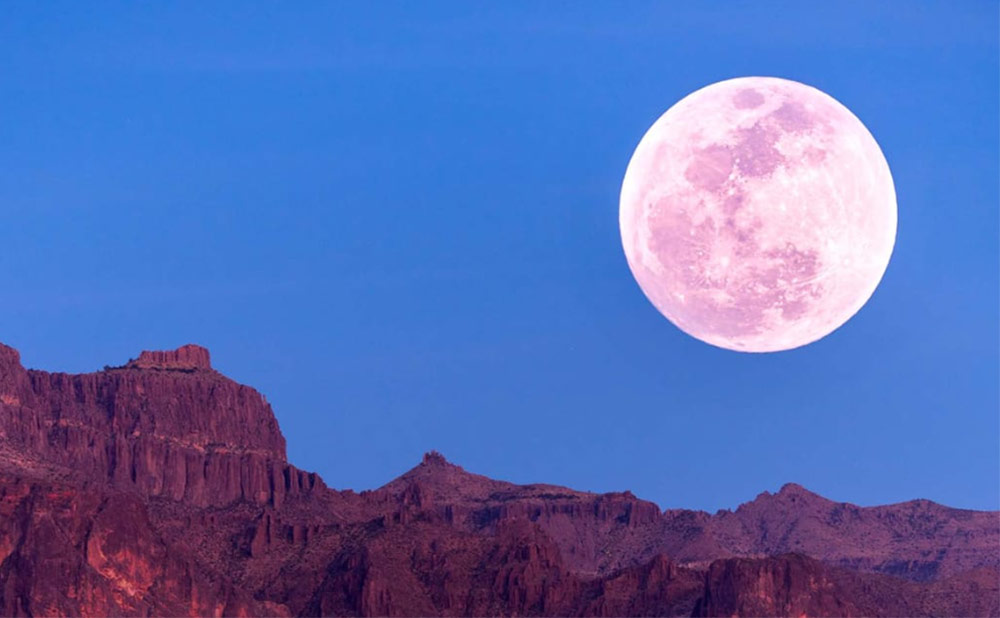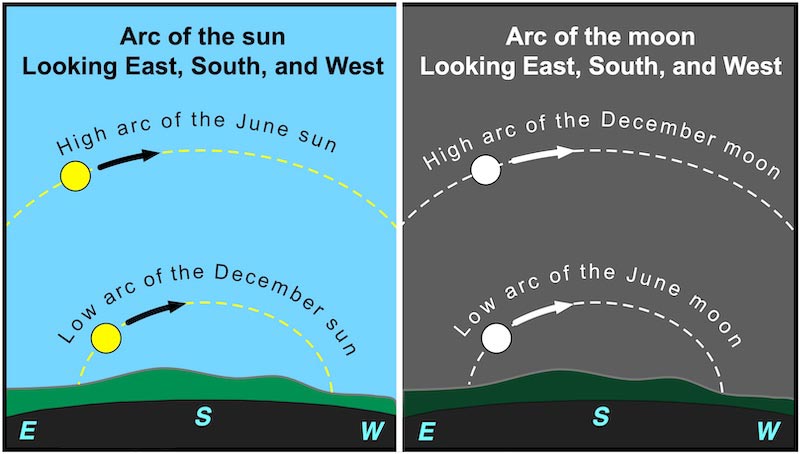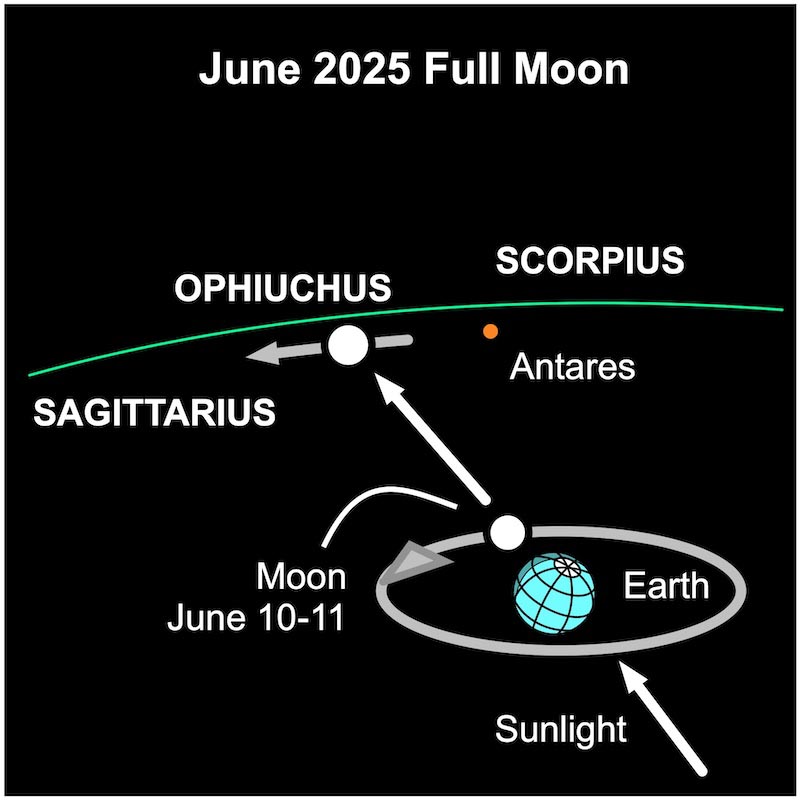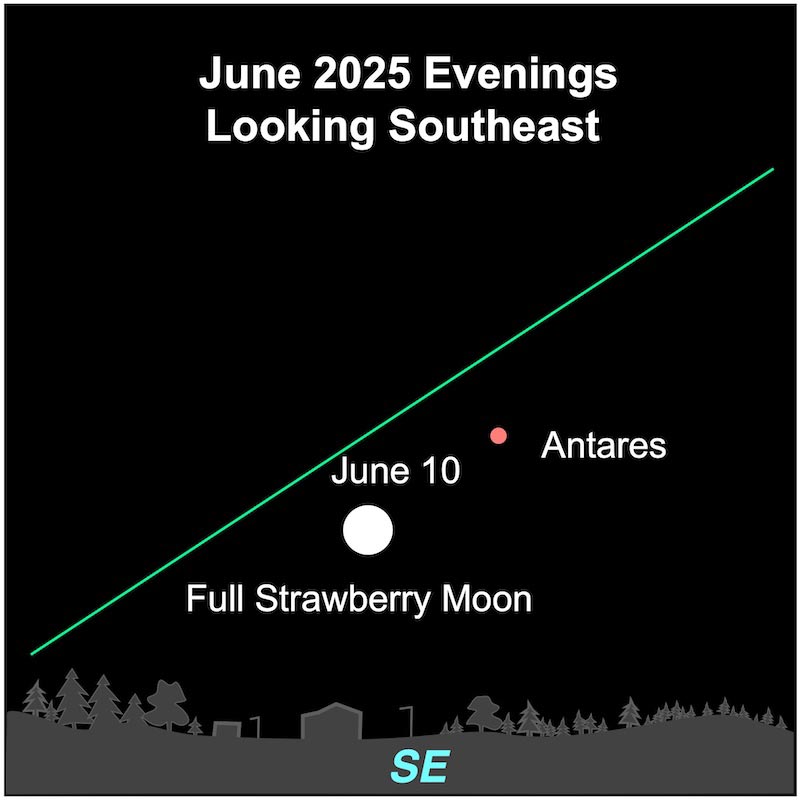Blog
Table of Contents

The Strawberry Moon of June - The lowest full moon in nearly 2 decades
The night sky in June 2025 will welcome a special full moon – not only the iconic "Strawberry Moon" of the Northern Hemisphere summer but also one that will dazzle with its lowest trajectory in decades! This rare astronomical phenomenon will unfold on the night of June 10–11, when a low-hanging full moon will shine alongside Antares, the heart of Scorpius, offering a stunning display of the Moon's orbital cycles.
When and Where to Catch This Special Full Moon?
Best Viewing Time: Night of June 10 to early morning of June 11, 2025
Viewing Directions:
- After sunset on June 10, the bright full moon will rise low in the east.
- It will reach its highest point in the sky after midnight (June 11).
- Just before sunrise, it will hang low in the west, creating a unique scene opposite the rising sun.
Exact Full Moon Time: 15:44 Beijing Time on June 11 (7:44 UTC). Observers in the Americas will see the full moon low in the west as the sun rises, creating a striking "sunrise-moonset" contrast.
Why Is This the "Lowest in Decades" Full Moon?
The Major Lunar Standstill: An 18.6-Year Orbital Wonder
The Moon's orbit around Earth is tilted at 5.15 degrees relative to the ecliptic (the Earth's orbital plane around the Sun). This tilt cycles over 18.6 years, causing the Moon's declination to reach extreme values (28.65° north or south), a phenomenon called the Major Lunar Standstill.
- · In January 2025, we reached the peak of this standstill, so June's full moon still bears its influence, making it the lowest since 2006.
- · Simply put: The Moon's "wobbling" orbit makes this June's full moon appear to "glide along the horizon," mimicking the low arc of the winter Sun in the Northern Hemisphere (similar to the December Sun's path).
Northern vs. Southern Hemispheres: A Contrasting Sky Theater
Northern Hemisphere: A Low - Hanging Lunar Display
In the Northern Hemisphere, the 2025 June full moon is set to follow a path that is reminiscent of the winter sun. As the night falls on June 10 - 11, observers will notice the full moon rising low on the eastern horizon.
The moon's orbit around the Earth is tilted at an angle relative to the Earth's equator and the plane of its orbit around the sun. In 2025, due to the long - term cycle of the moon's orbital tilt, the June full moon will be affected by the recent "Major Lunar Standstill" that occurred in January. This causes the moon to reach a relatively low declination in the sky.
Throughout the night, the full moon will seem to hug the southern horizon. It will move slowly across the sky, much like the winter sun does during the day. The low - hanging moon will pass through a thicker layer of the Earth's atmosphere. As a result, its light will be scattered, giving it a warm, golden - orange hue. This creates a mesmerizing sight, as the moon appears to blend in with the terrestrial landscape. For those in urban areas, the low - lying moon will be framed by city skylines, while in rural regions, it will be set against the backdrop of mountains, forests, or open fields. The entire experience is like witnessing a nocturnal version of a winter sun, with the moon's gentle glow casting long shadows over the landscape.

Southern Hemisphere: A High - Arcing Lunar Spectacle
In the Southern Hemisphere, where it is winter during June, the situation is quite the opposite. The full moon will trace a high arc across the sky, similar to how the sun behaves in the Northern Hemisphere during summer.
Just as the Northern Hemisphere's winter sun struggles to climb high in the sky, the Southern Hemisphere's winter full moon will soar to great heights. This is because the same orbital mechanics that cause the low - lying moon in the Northern Hemisphere result in a high - arcing moon in the Southern Hemisphere.

The Romance of the Strawberry Moon: Culture and Science Behind the Name
Origins of the "Strawberry Moon"
June full moon is in Ophiuchus in 2025
The June full moon can lie in front of one of three constellations of the zodiac. First, it can be in the constellation Sagittarius the Archer. Second, in Scorpius the Scorpion. Or third, in the constellation Ophiuchus the Serpent Bearer.
As seen from the Americas, the full moon will rise on the night of June 10 located in the bottom of Ophiuchus. Also, the full moon will lie near the center of our Milky Way galaxy. The galactic center is in the neighboring constellation Sagittarius.

June full moon is near Antares
You'll notice a bright star near the moon. It's red Antares, the brightest star of Scorpius, known as the Scorpion's Heart. The constellation Ophiuchus lies right next to the constellation Scorpius.

How to Document This Celestial Wonder?
While the Strawberry Moon's golden glow is breathtaking to the naked eye, SVBONY's precision-engineered optics transform casual stargazing into a detailed lunar adventure. Below, discover tools designed to suit every observer - from beginners to astrophotography pros.
Naked Eye: A Timeless View, But Gear Unlocks Detail
Even without tools, the Moon's low arc and warm hue are stunning. But to explore its craggy craters, dark maria (lunar ''seas''), and the fiery glint of nearby Antares, binoculars or a telescope reveal layers of beauty hidden from the naked eye.
Binoculars: Versatile, Portable
For up-close lunar textures, the SVBONY SA205 8x42 ED Flat-Field Binoculars stand out:
- Flat Field Correction: The flat-field design can effectively control the edge distortion of the field of view, making your field of vision clear.
- ED Glass: ED glass can eliminates chromatic aberration or color fringing, you'll enjoy razor-sharp images.
- Fully Multi-Coated (FMC) : It improves light transmittance, reduce light loss; allowing you to obtain clearer and brighter images and provide a better observation experience.
- IP67 Waterproof: The binoculars with an IP67 waterproof rating,can also be used in bad weather; increasing the durability of the binoculars and extending its service life.
Telescopes: Unlocking Lunar Detail with Precision Optics
SVBONY MK127 Maksutov-Cassegrain Telescope: With a 127mm aperture and f/11.8 focal ratio. A 3-mirror Maksutov-Cassegrain design (95% reflectivity) and dual-speed focuser ensure pinpoint accuracy.
MK127 Telescope + SV135 Zoom Eyepiece + SV182 Finder Scope + SV221 Diagonal + SA402 Tripod
SVBONY SV503 70ED F6.78 Refractor Telescope: The SVBONY SV503 70ED features built-in flat-field correction, a Quadruplet 4-element ED lens with FPL51 and lanthanum special glass1 to enhance color fidelity and clarity, and dual-speed focusing for precise adjustments.
SV503 70 ED + SV191 Zoom Eyepiece + SV188P Diagonal + SV182 Finder Scope + AZ-Mount & Tripod
SVBONY SV550 80 APO Triplet Refractor: This APO triplets eliminate color fringing entirely, ensuring edge-to-edge sharpness.
SV550 80 APO + SV223 Diagonal + SV215 Zoom Eyepiece + SV182 Finder Scope + SV211 Handle Bar + AZ-Mount & Tripod


There are no customer reviews yet . Leave a Reply !